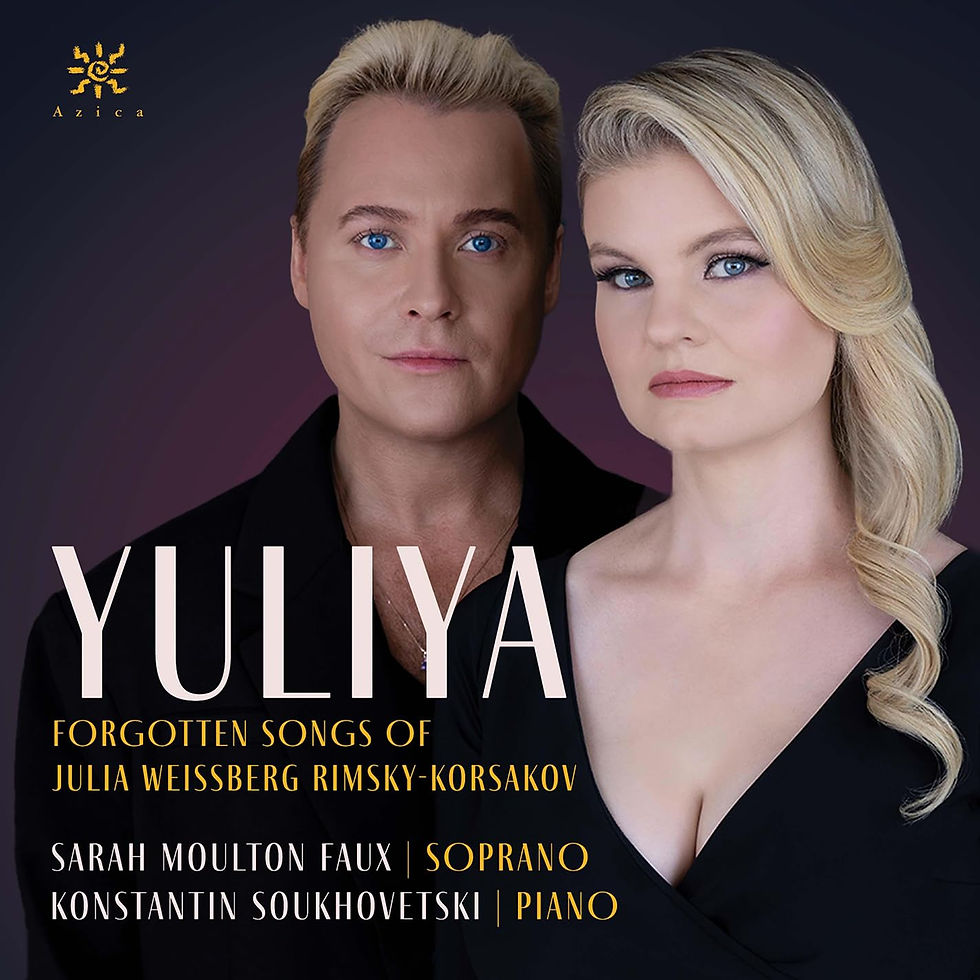Lera Auerbach – excessive ease of aesthetic discovery
- May 22, 2015
- 3 min read
Updated: Jun 20, 2020

An artist who does not like to comment on her own prolific work, Lera Auerbach answers query with further creative output. “When I was told, you can’t be a composer and a pianist, I started to paint,” says the now 30something Russian-American pianist, composer, visual artist, and poet.
Literature and poetry were always part of Auerbach’s artistic inspiration and an integral part of her creative DNA. She has published three books of poetry in Russian, selected works of which have been recited publicly in performances by Gerard Depardieu, Sergey Yursky, and Evgeny Kissin. In 1996, the International Pushkin Society of New York named her Poet of the Year, and her poetry and prose are included in textbooks mandatory for schoolchildren in her native Russia.
Alongside several of her own librettos, Auerbach writes the English blog Trouble Clef, published for over a decade as a contribution to the Best American Poetry blog. Her first English publication is titled Excess of Being. A collection of aphorisms, some of which occasionally appear in Trouble Clef, it is a spontaneous work in progress collected over three years, which, compiled into eight chapters, integrates and comments on different aspects of life.
Coupled with some 120 oil-on-rusted metal works made from antique roof tiles that Auerbach found in an architectural salvage store, the book completes a body of work that she felt was forging its way for some time. Originally approached by her publisher about a book of prose, the plan changed quickly; as aphorisms continually appeared, the author kept collecting, jotting down her thoughts in a notebook she kept next to her bed whenever inspiration struck. “Early on I felt there was something else that wanted to come out,” a feeling Auerbach always fosters while writing or composing.
It is in the editing and grouping process, an intense period of structuring by condensing, that Auerbach’s more evaluative shaping takes place. The visual art element of her work started out similarly impulsively before becoming an integral and defining part of the book. She fell in love with the characteristics of the raw and rusty material, and the 19th century tiles’ alluring time-worn aesthetic. “There is beauty in the spontaneity of creating,” says Auerbach, seeing strong connections between her visual art and her work as a pianist and composer. “Not unlike in performance, there is a certain spontaneity involved in the creative process. You can’t correct yourself with this unusual technique. You can only keep it as is, or discard it. That takes an inner freedom and courage. You can’t be afraid of making a mistake.”
“A book of aphorisms is a rather strange genre: It may seem similar to poetry but it’s also very different in how I relate to it. Excess of Being is based on a Rainer Maria Rilke poem.” Auerbach quotes: “‘Excess of being wells up in my heart …’ Rilke was fascinated with the Russian language. I edited some of his Russian poems, because I felt there was so much beautiful imagery with an awkward use of language. It gave me great joy working on it and I loved the process.”
Many of Auerbach’s grand scale scores embrace dramatic fairy tales, often willed by the artist’s own romantic mindset, but with an ingenious message of their own: “It is irrelevant how you feel,” says Auerbach. “What matters is the work itself. You tune yourself to be the instrument of your creation and, the work writes itself. I make the grand plan, but then I let it go, and very often, the work turns out differently than I had originally perceived it, and I allow it to be.”

The process of her own artistic creativity is at the heart of her contemplation and observation, and often shows up in her most original scores. It is perhaps precisely because of her distinctive eye for its conceptual framework and orchestrated architecture that Auerbach’s aphoristic shorthand becomes true commentary. “Dying from a paper cut,” the author remarks on her own, sometimes overwhelming struggle with the little things in life. Depicting occurrences and observations stemming from everyday life, to love and to music, her words – perhaps best pondered upon in small dosage – offer truism in coming to terms with life’s excess by making it into art.



Comments